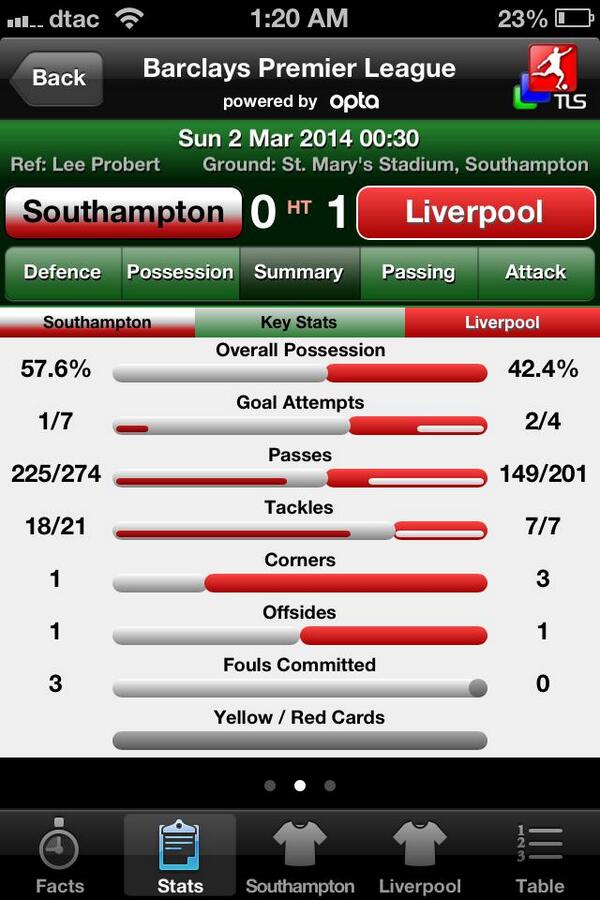Liverpool Football Club, of which I’ve been a fan for nearly eleven years now, is in the midst of a storm with fans protesting against high ticket prices. The butt of the fans’ ire has been the new £77 ticket that will be introduced next season. Though there will be few tickets that will be sold at that price, the existence of the price point has been enough to provoke the fans, many of whom walked out in the 77th minute of the home draw against Sunderland last weekend.
For a stadium that routinely sells out its tickets, an increase in ticket prices should be a no-brainer – it is poor revenue management if either people are scrambling for tickets or if there are empty seats. The problem here has been the way the price increase has been handled and communicated to the fans, and also what the club is optimising for.
At the outset, it must be understood that from a pure watching point of view, being in a stadium is inferior to being in front of a television. In the latter case, you not only have the best view of the action at all points in time, but also replays of important events and (occasionally) expert commentary to help you understand the game. From this point of view, the reason people want to watch a game at the ground is for reasons other than just watching – to put it simply, they go for “the experience”.
Now the thing with stadium experience is that it is a function of the other people at the stadium. In other words, it displays network effects – your experience at the stadium is a function of who else is in the stadium along with you.
This can be complex to model – for this could involve modelling every possible interaction between every pair of spectators at the ground. For example, if your sworn nemesis is at the ground a few seats away from you, you are unlikely to enjoy the game much.
However, given the rather large number of spectators, these individual interactions can be ignored, and only aggregate interactions considered. In other words, we can look at the interaction term between each spectator (who wants to watch the game at the ground) and the “rest of the crowd” (we assume idiosyncrasies like your sworn enemy’s presence as getting averaged out).
Now we have different ways in which a particular spectator can influence the rest of the crowd – in the most trivial case, he just quietly takes his seat, watches the game and leaves without uttering a word, in which case he adds zero value. In another case, he could be a hooligan and be a pain to everyone around him, adding negative value. A third spectator could be a possible cheerleader getting people around him to contribute positively, organising Mexican waves and generally keeping everyone entertained. There can be several other such categories.
The question is what the stadium is aiming to optimise for – the trivial case would be to optimise for revenue from a particular game, but that might come at the cost of stadium “atmosphere”. Stadium atmosphere is important not only to galvanise the team but also to enthuse spectators and get them to want to come for the next game, too. These two objectives (revenue and atmosphere) are never perfectly correlated (in fact their correlation might be negative), and the challenge for the club is to price in a way that the chosen linear combination of these objectives is maximised.
Fundamental principles of pricing in two-sided markets (here it’s a multisided market) say that the price to be charged to a participant should be a negative function of the value he adds to the rest of the event (to the “rest of the crowd” in this case).
A spectator who adds value to the crowd by this metric should be given a discount, while one who subtracts value (by either being a hooligan or a prude) should be charged a premium. The challenge here is that it may not be possible to discriminate at the spectator level – other proxies might have to be used for price discrimination.
One way to do this could be to model the value added by a spectator class as a function of the historic revenues from that class – with some clever modelling it might be possible to come up with credible values for this one, and then taking this value into account while adjusting the prices.
Coming back to Liverpool, the problem seems to be that the ticket price increase (no doubt given by an intention to further maximise revenue takings) has badly hit fans who were otherwise adding positive value to the stadium atmosphere. With such fans potentially getting priced out (in favour of fans who are willing to pay more, but not necessarily adding as much value to the ground), they are trying to send a message to the club that their value (toward the stadium atmosphere) is being underestimated, and thus they need greater discounts. The stadium walkouts are a vehicle to get across this point.
Maximising for per-game revenue need not be sustainable in the long term – an element of “atmosphere” has to be added, too. It seems like the current worthies at Liverpool Football Club have failed to take this into account, resulting in the current unsavoury negotiations.
Now that I’ve moved to Barcelona, Liverpool FC need not look too far – I’ve done a fair bit of work on pricing and revenue management, and on two-sided markets, and can help them understand and analyse the kind of value added by different kinds of spectators, and how this can translate to actual revenues and atmosphere. So go ahead and hire me!


